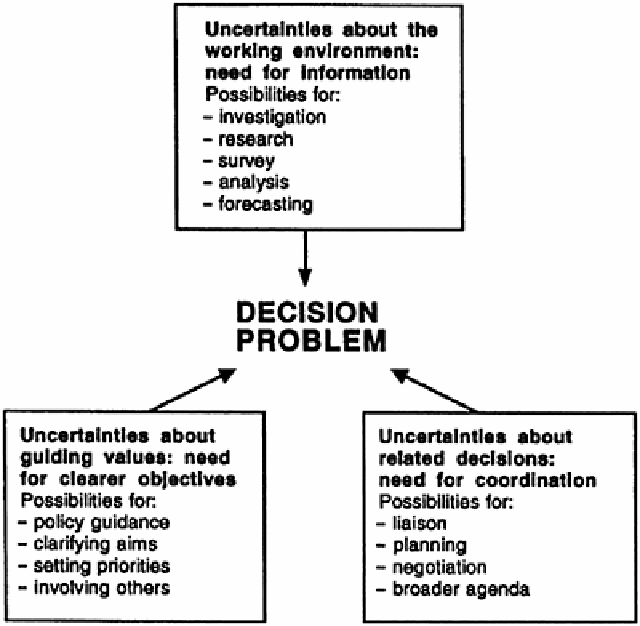Environmental Engineering Reference
In-Depth Information
subsequent UK Regulations (DETR 1999) include “the probability of the impact” in the
characteristics of the potential impact of a project which must be considered. There are
many sources of uncertainty relevant to the EIA process as a whole. In their classic works
on strategic choice, Friend & Jessop (1977) and Friend & Hickling (1987) identified three
broad classes of uncertainty: uncertainties about the physical, social and economic
environment (UE), uncertainties about guiding values (UV) and uncertainties about
related decisions (UR) (Figure 5.5). All three classes of uncertainty may affect the
accuracy of predictions, but the focus in an EIA study is usually on
Figure 5.5
The types of uncertainty in
decision-making. (
Source:
Friend &
Hickling 1987.)
uncertainty about the environment. This may include the use of inaccurate and/or partial
information on the project and on baseline-environmental conditions, unanticipated
changes in the project during one or more of the stages of the life cycle, and
oversimplification and errors in the application of methods and models. Socioeconomic
conditions may be particularly difficult to predict, as underlying societal values may
change quite dramatically over the life, say 30-40 years, of a project.

Search WWH ::

Custom Search